- As amphibians decline worldwide, organization releases list of the 100 most endangered and unique.
Due to numerous factors—including habitat destruction, pollution, climate change, and chytrid fungus—amphibians are probably the most threatened taxon in the world, with more than one-third of species at risk of extinction.
“Tragically, amphibians tend to be the overlooked members of the animal kingdom, even though one in every three amphibian species is currently threatened with extinction, a far higher proportion than that of bird or mammal species,” said Dr Jonathan Baillie, head of the EDGE organization which has just established an amphibian conservation program.
To help save these species on the brink, EDGE, a part of the Zoological Society of London, has compiled a list of the hundred most threatened and evolutionary distinct amphibians.
For this year, EDGE has chosen ten amphibians to receive immediate conservation attention:
- The Chinese giant salamander can reach five feet in length, making it the world’s largest amphibian.
- The Sagalla caecilian is a limbless amphibian resembling an earthworm.
- Nasikabatrachus sahyadrensis is a purple-pigmented frog that was only discovered in 2003. It is the only member of the first new frog family discovered since 1926. It remained hidden from science for so long, because it spends the majority of the year buried twelve feet underground.
- The six species of ghost frogs from South Africa, one of which lives only in the traditional burial grounds of Skeleton Gorge in Table Mountain.
- The Olm is a blind salamander that lives in water caves in Europe. It hunts for its prey by smell and electrosensitivity and has proven in controlled experiments that it can survive without food for an astonishing 10 years.
- The lungless salamanders of Mexico breathe through their skin and mouth lining.
- The Malagasy rainbow frog lives up to its name with its vibrant markings and possesses the unique ability to climb vertical surfaces.
- The Chile Darwin’s frog may already be extinct. It has not been seen since the 1980s. It is one of only two species in the family Rhinodermatidae. Unusually the father will collect their tadpoles in their mouth for protection.
- The Betic midwife toad from Spain, whose males carry fertilized eggs wrapped around their hind legs, evolved over 150 million years ago.
- The Gardiner’s Seychelles frog may be the world’s smallest frog. They grow up to 11mm in length—small enough to find a fingernail roomy.
 Chinese Giant Salamander. Photo from the International Cooperation Network for Giant Salamander Conservation |
A gallery of the 10 most threatened amphibians 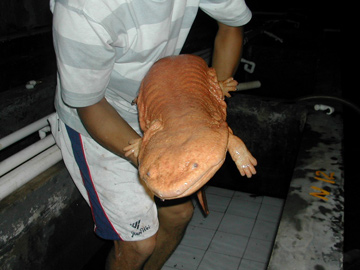 Chinese Giant Salamander – International Cooperation Network for Giant Salamander Conservation 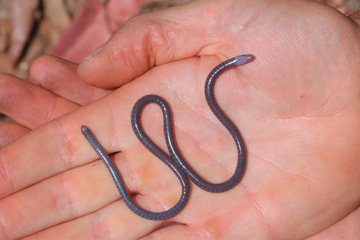 Sagalla caecilian – John Measey 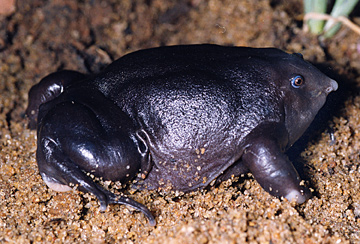 Purple frog – Sathyabhama Das Biju 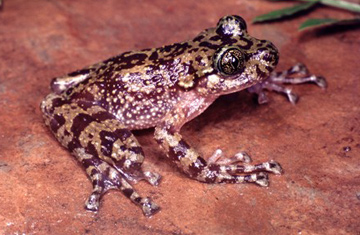 Heleophryne rosei – Vincent Carruthers 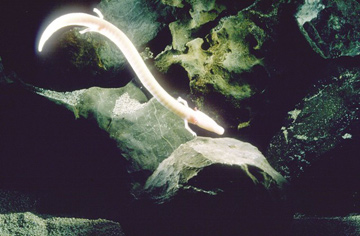 Olm – Arne Hodalic 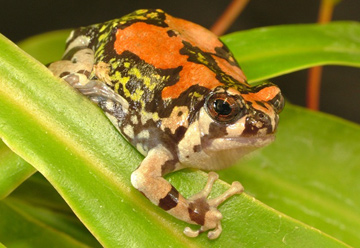 Malagasy rainbow frog. Photo by George Sunter/ZSL 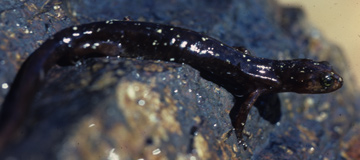 Aquatic false brook salamander – Jonathan Campbell 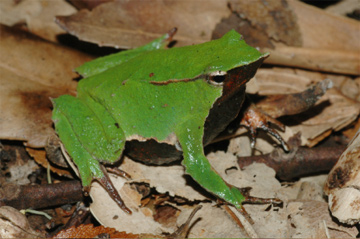 Darwin’s frog, but not the Chile Darwin’s frog – Jaime Bosch 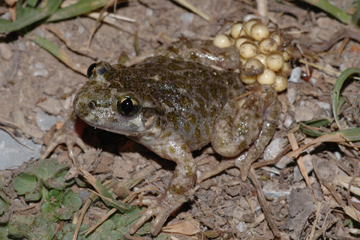 Betic midwife toad – Jaime Bosch 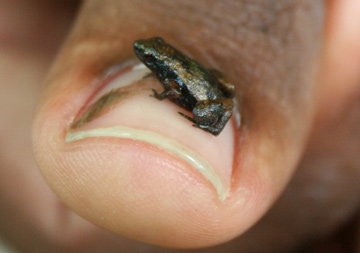 Gardiner’s Seychelles frog – Naomi Dook |
So far amphibians have been overlooked by most conservation organizations. Many believing that if an ecosystem is protected than its species are safe. But numerous amphibians are declining not due to loss in habitat, but factors such as climate change and disease. Amphibians are particularly sensitive to changes in water levels or quality. Helen Meredith, EDGE Amphibians coordinator states that “the EDGE amphibians are amongst the most remarkable and unusual species on the planet and yet an alarming 85% of the top 100 are receiving little or no conservation attention and will become extinct if action is not taken now.” EDGE is not the only organization to focus on amphibians this year: an alliance of world-wide zoos, botanical gardens, and aquariums have launched 2008 as “The Year of the Frog” to raise awareness and funds for amphibians.
Amphibians are far older than mammals and birds. They first developed in the Devonian period around 365 million years ago, and have survived four mass extinction events since then, including the alleged comet that wiped-out the dinosaurs. However, it appears that they may not survive the current Holocene mass extinction, purportedly caused by environmental changes caused by humans. According to EDGE’s website, nearly half of the world’s amphibians are in decline while 165 species may already be extinct. Dr. Baillie calls them “the canaries in the coalmine. If we lose them, other species will inevitably follow. The EDGE programme strives to protect the world’s forgotten species and ensure that the weirdest species survive the current extinction crisis and astound future generations with their extraordinary uniqueness.”
Launched in January of 2007, EDGE has achieved numerous successes in its first year. The program discovered proof that the Long-beaked echidna still survives in Papua New Guinea and took the first footage of the Long-eared Jerboa in the wild. It has also set up local fellows to study and work toward conservation plans for the Pygmy hippopotamus, the Bactrian camel, and the Bumblebee bat. Perhaps most importantly, the organization has brought many long-ignored (but greatly endangered) species to public attention.